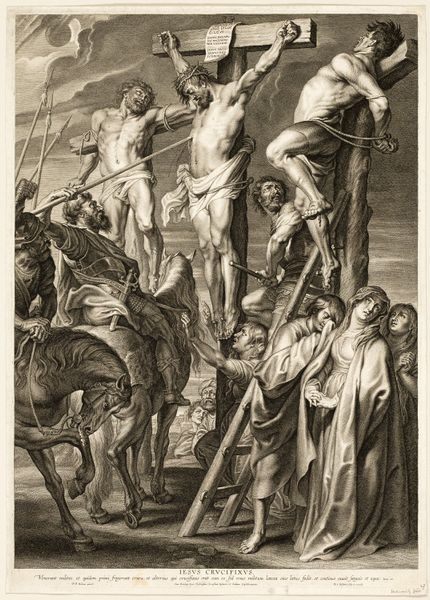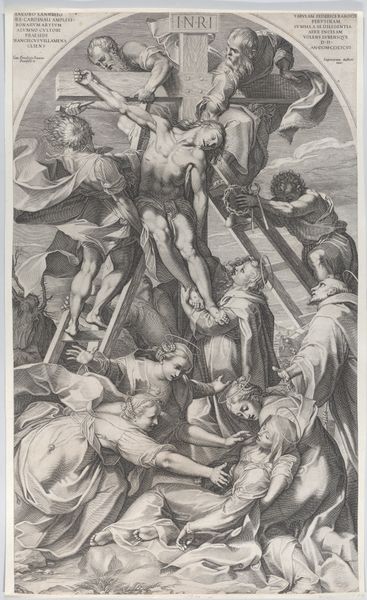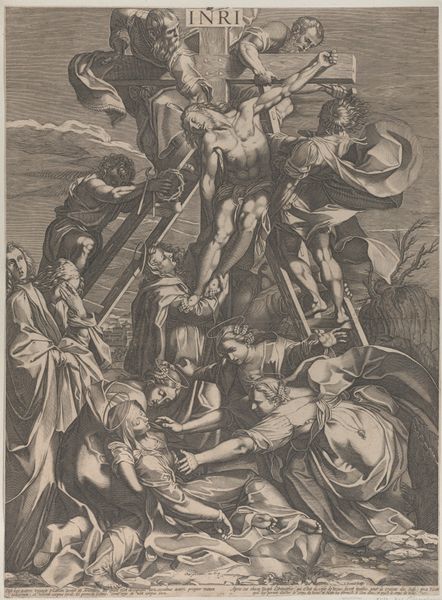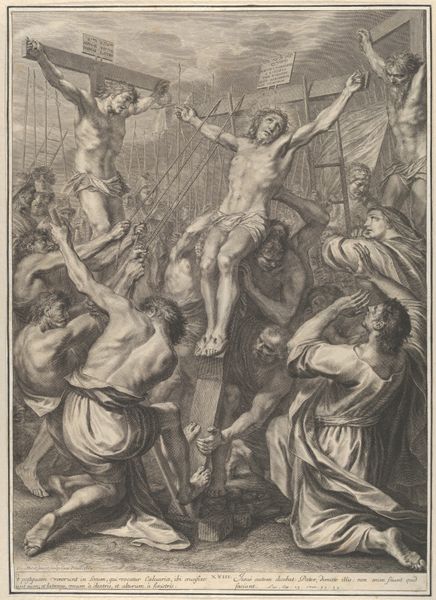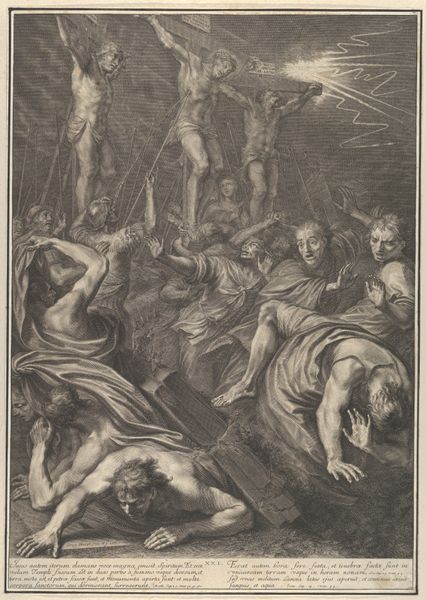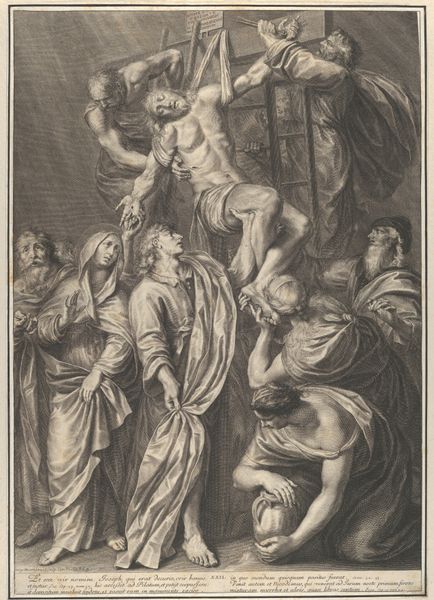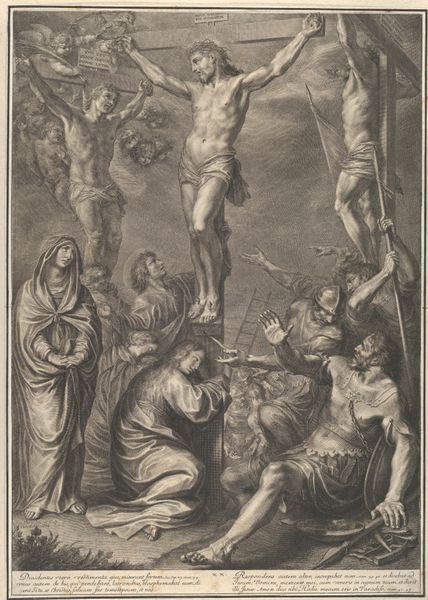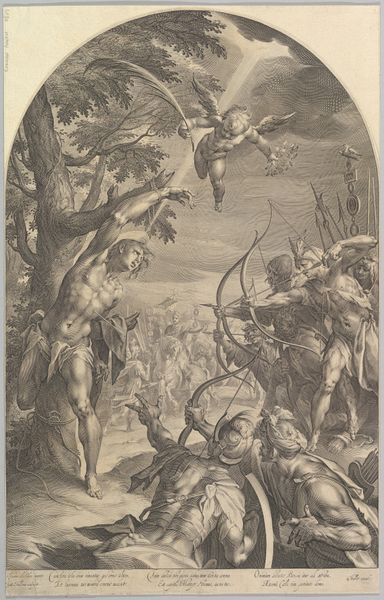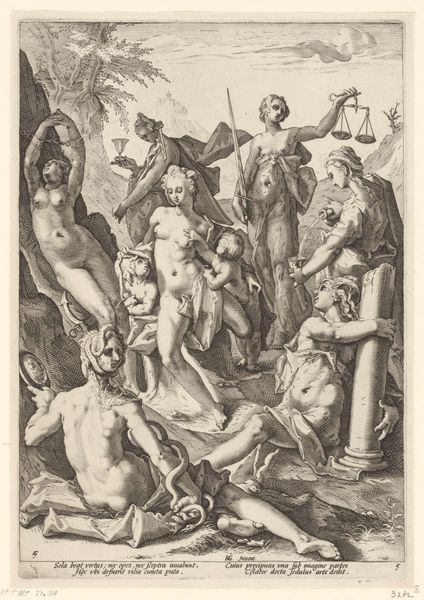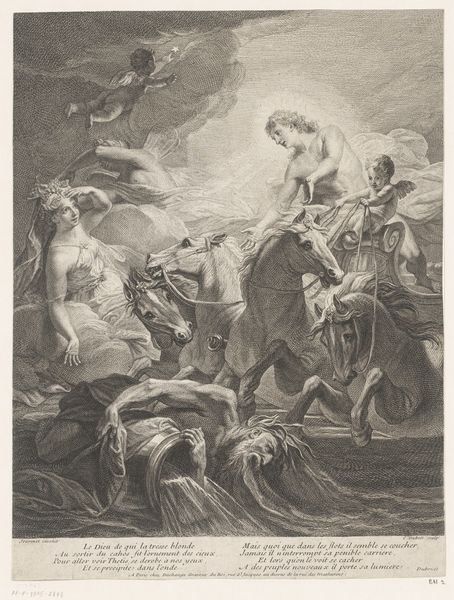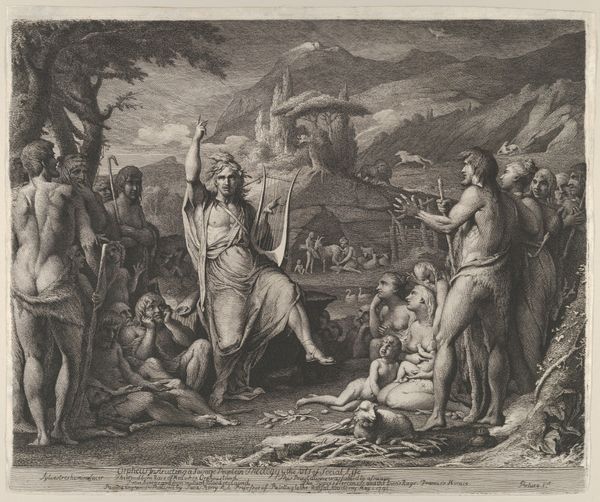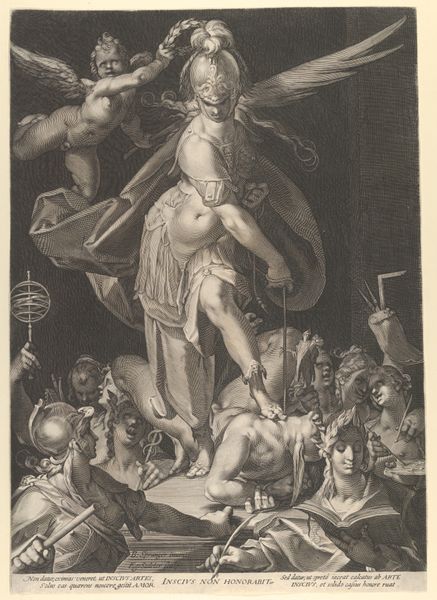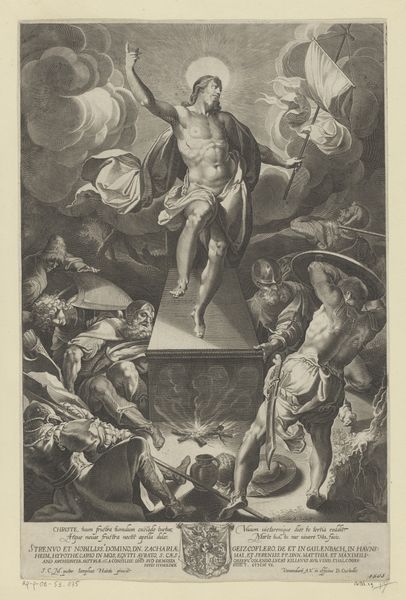
Christ on the Cross with St. Mary and St. John, from The Passion of Christ, plate 19 1664
0:00
0:00
Dimensions: Sheet: 19 11/16 in. × 14 in. (50 × 35.6 cm)
Copyright: Public Domain
Curator: Here we have "Christ on the Cross with St. Mary and St. John, from The Passion of Christ, plate 19," a 1664 engraving by Gr\u00e9goire Huret, currently residing at the Metropolitan Museum of Art. Editor: My goodness, what a storm of figures and emotion. It feels almost suffocatingly dense, like trying to process a trauma. There's a stark nakedness, too, that amplifies the vulnerability on display. Curator: Indeed, Huret uses the engraving medium to create intricate textures and dramatic contrasts, highlighting the physical suffering of Christ and the emotional distress of those surrounding him. Note the classical influences interwoven within a baroque sensibility. We are in an era grappling with faith, power, and the human condition, all colliding here. Editor: The way Mary and John are rendered, their faces etched with grief, really pulls you in. I’m struck by the active, participatory anguish versus Christ’s more stoic suffering. It’s interesting how that interplay can be both emotionally arresting and, in a way, theatrically distant, if that makes sense. Curator: Absolutely. Consider, too, how Huret frames the crucifixion within the sociopolitical dynamics of his time. It isn't merely a religious scene. The work embodies broader themes of injustice, sacrifice, and the enduring power of faith against systemic oppression. The figures' identities and roles are entrenched in their time's understandings of gender and piety, making them integral to that historical moment's conversation about power and submission. Editor: I get this odd sense of... spectacle, I guess? Despite the genuine horror, it also feels performative, almost ritualistic. Does that connect to Baroque aesthetics leaning into drama as a way to involve the viewer? Curator: Precisely. Baroque art frequently employs heightened emotional expression to engage the audience and evoke a sense of awe and reverence. But it also makes a powerful statement about social hierarchies and how these are performed through rituals and iconography. The meticulous details – Christ's strained muscles, the tear-streaked faces of the onlookers – were designed to elicit a powerful, embodied reaction in the viewer, embedding them within the narrative's ethical and spiritual dilemmas. Editor: I see that performance as both incredibly raw and deliberately crafted. This piece almost feels like an enduring mirror – showing how pain, faith, and spectacle still dance together in our cultural narratives. Curator: An astute observation, wouldn't you agree? It highlights how historical artistic representations can continue to inform and shape contemporary conversations.
Comments
No comments
Be the first to comment and join the conversation on the ultimate creative platform.
